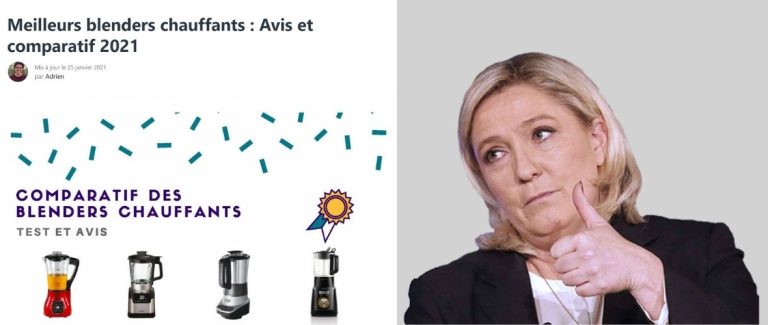Domain reselling is a widely used technique by the SEO community to benefit from the historical results of a domain and rank faster than starting from scratch. Today, I want to walk you through one example, maybe the most interesting one I have ever came into.
It is fascinating because it involves a politician’s website and I think it yielded a tremendous amount of money for the company in charge of this project (if you are really interested to know who, it is not that hard to find the answer). Before getting into more details, here goes a quick introduction on how affiliate websites work, because you will need it to understand completely the example I’m about to get into.
If you are familiar with the concept, you can skip the first part.
Introduction
Affiliate websites are one of the most simple and wide-spreaded business model on the internet. The process consists in building a website to rank on commercial keywords (like “best shoes for running”), and link to E-commerce websites (like Amazon) in your content to get a cut on products bought by your users.
One example:
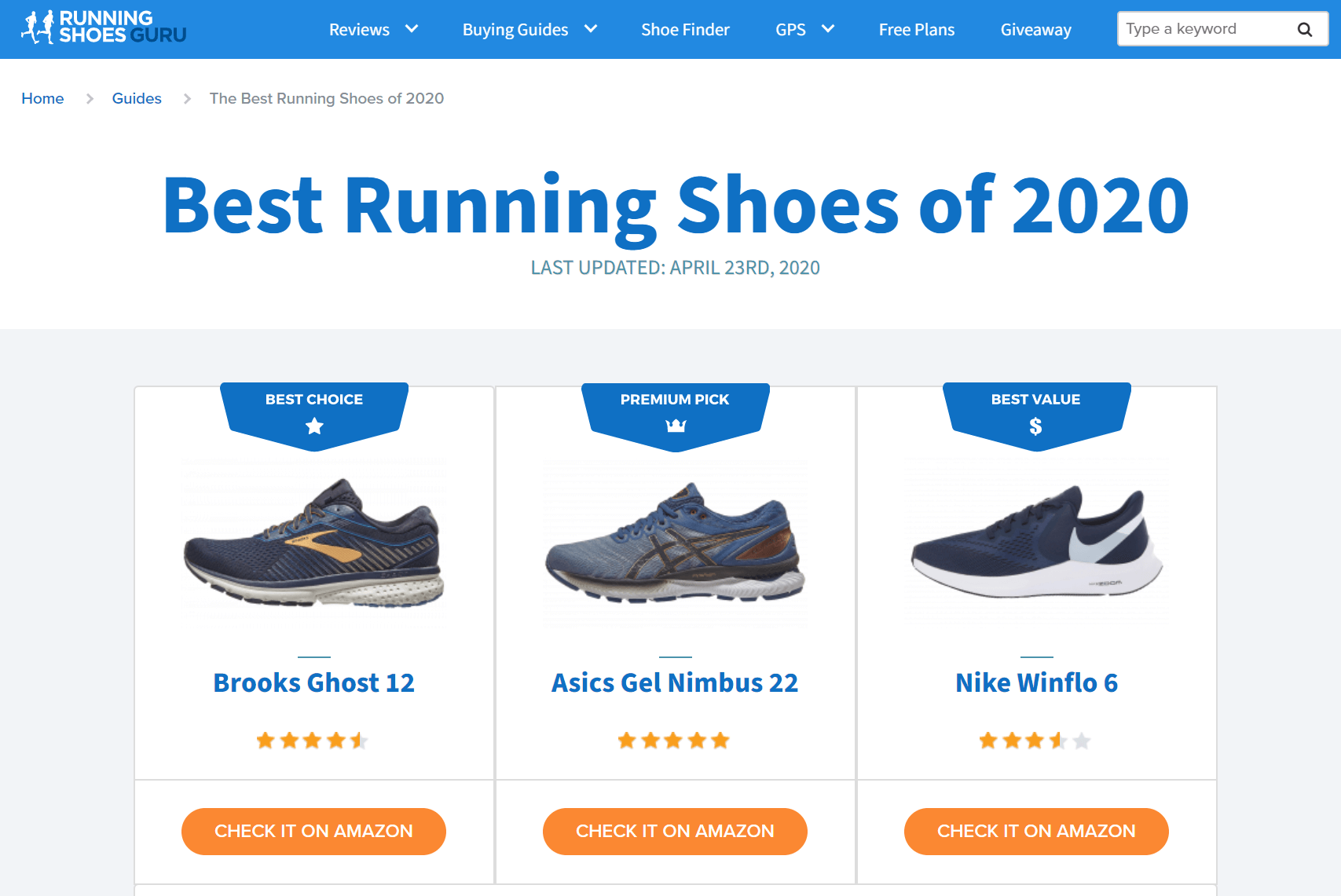
Why do brands create affiliate programs? Because even if they have to give away a part of their revenue, it is still one of the less expansive marketing channel to acquire new customers. As far as website owners are concerned, they don’t have to create an E-commerce platform, which is far more complex than a simple content website linking out to partners.
2017: French Election
If you are not French or not very familiar with French politics, a little bit of context first. Every 5 years, France elects the person who will run the country. To win the election, candidates need to obtain more than 50% of the votes. If nobody does, the two candidates with the most votes face each other in a second round where the one with the most votes is finally elected President.
One of the candidates in 2017 was Marine Le Pen, representing the Front National (now called Rassemblement National), a far-right party. She eventually got to the second round and lost against Emmanuel Macron, the current French president. Her campaign team used the website https://marine2017.fr/ to centralize the official communication: meetings, political ideas etc…
If you go to archive.org, you can see what was the domain looked like back in 2016:
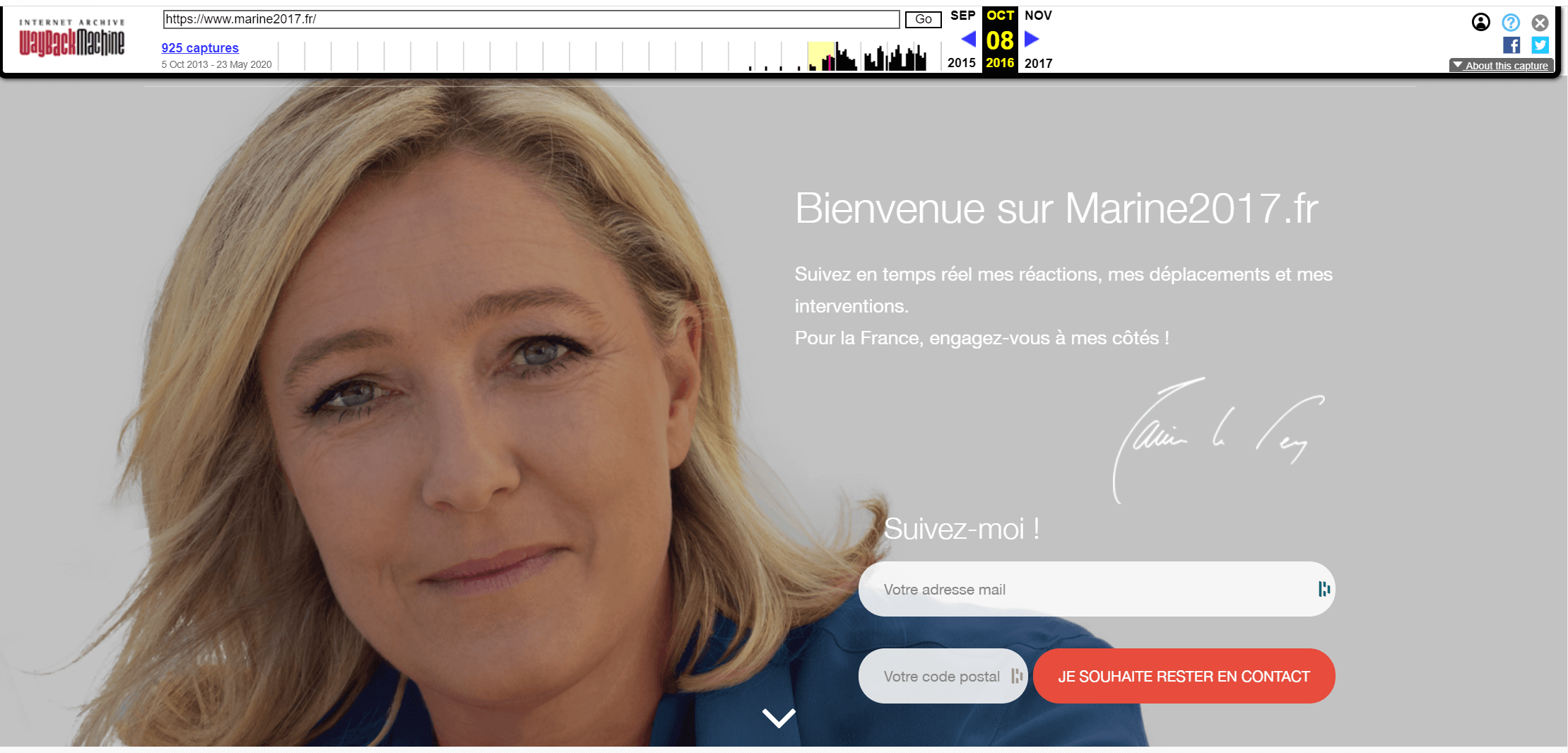
This kind of websites usually receive a lot of backlinks before and during the campaign because news websites use them as the main source to understand the different candidates’ programs. This was also the case with Marine Le Pen’s website as you can see in the chart below:
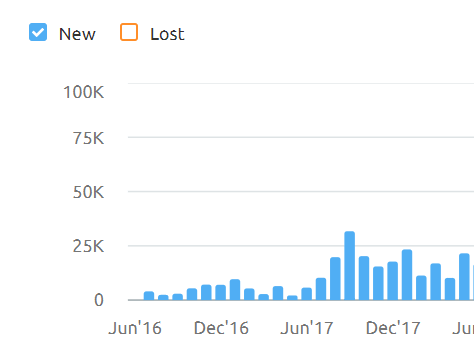
You can actually see a similar trend with other politicians because the election is widely covered by media.
2018: Unexpected Change
After the election, these websites are usually abandoned because they don’t have a purpose anymore. In this situation, it is especially the case since the year is included in the domain, making it useless for any use after the 2017 election has taken place ! But as you can imagine, the website is still active as I write this article. What happened? From the information available on internet, it is very likely that the domain was registered by someone else at the beginning of 2018.

And the website started featuring brand new content some days after that:
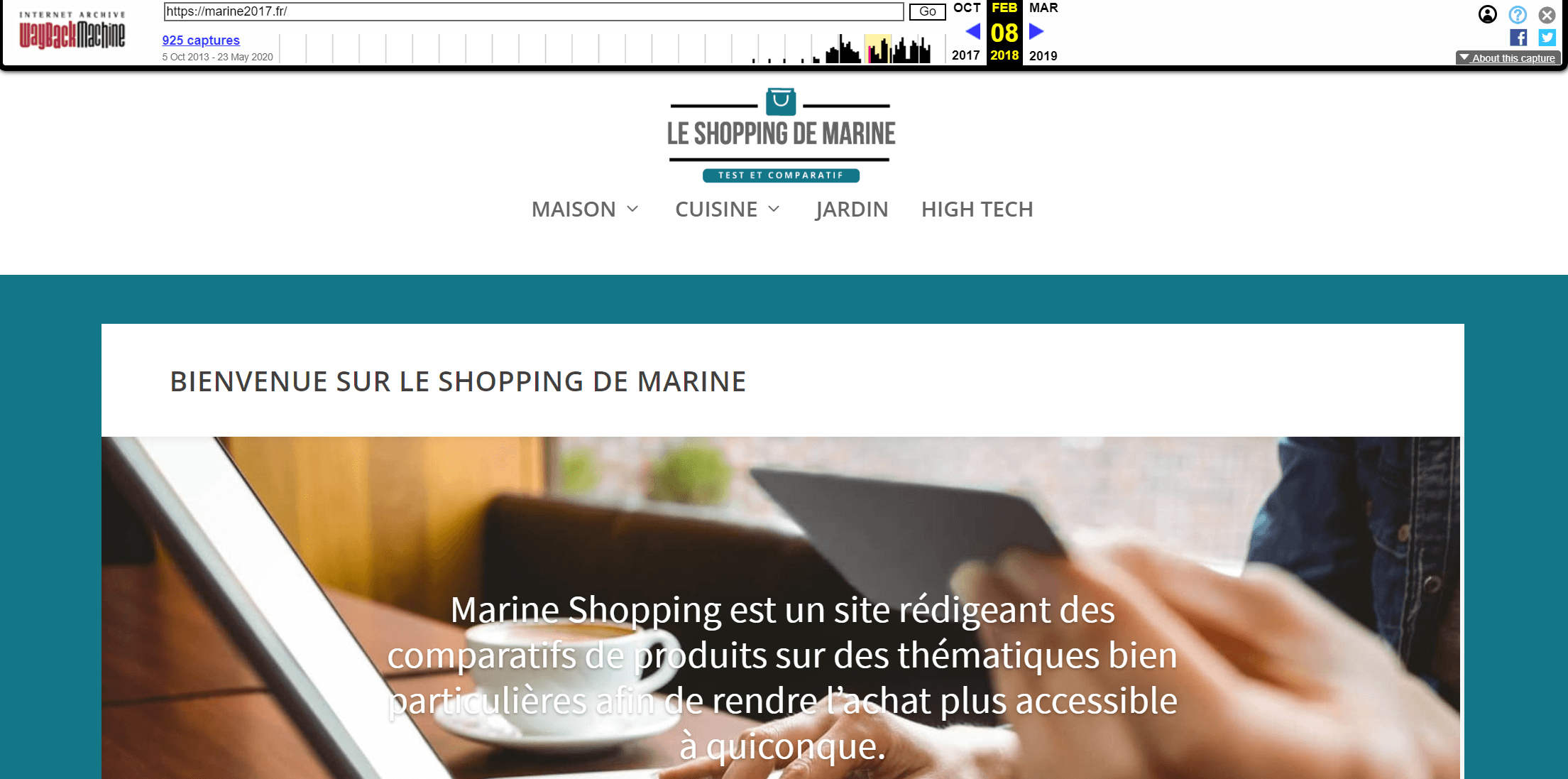
In case you do not speak French, the screenshot above is of a product comparison website. The business model was pretty simple: an affiliate website. It is interesting to notice that the name “Marine” had been kept. The purpose was undoubtly to cheat the algorithm, not for branding purpose. Google would basically see a website with decent content, with a load of backlinks linked to “Marine” (a part of the brand name) and hence, would rank the website on its target terms.
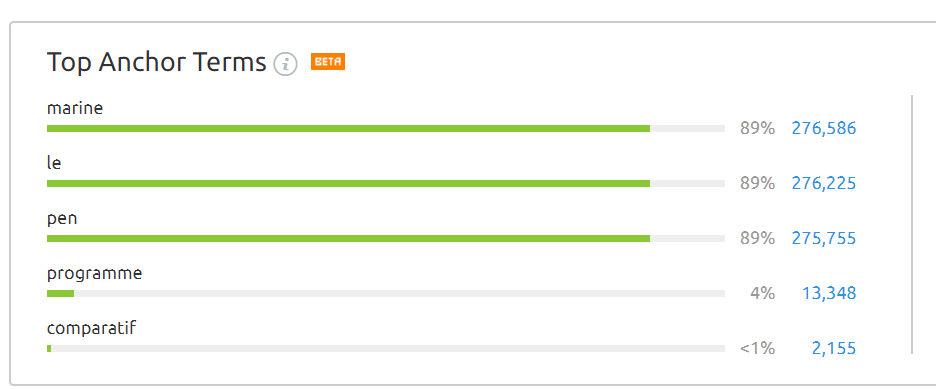
Did it work? Well, let’s have a look at the Sistrix visibility for the website in France:
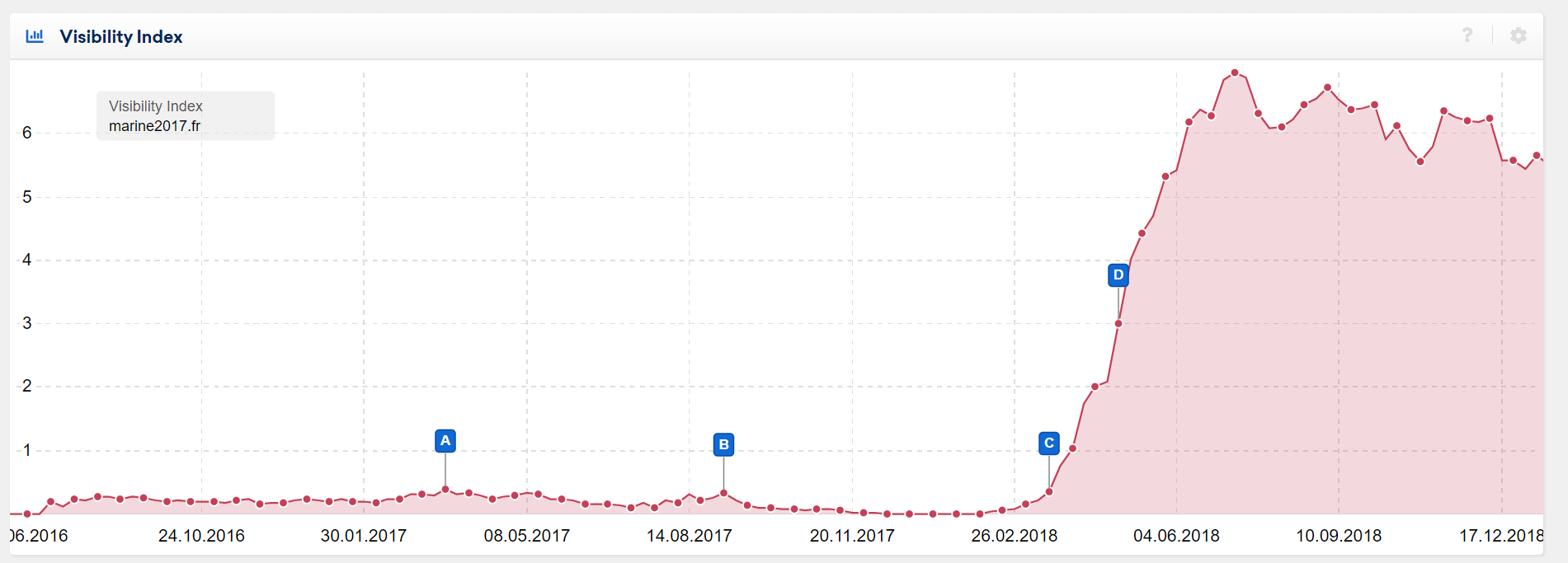
It’s not that it worled, it was a huge sucess. The website managed to rank on keywords like “meat grinder” in a matter of weeks.
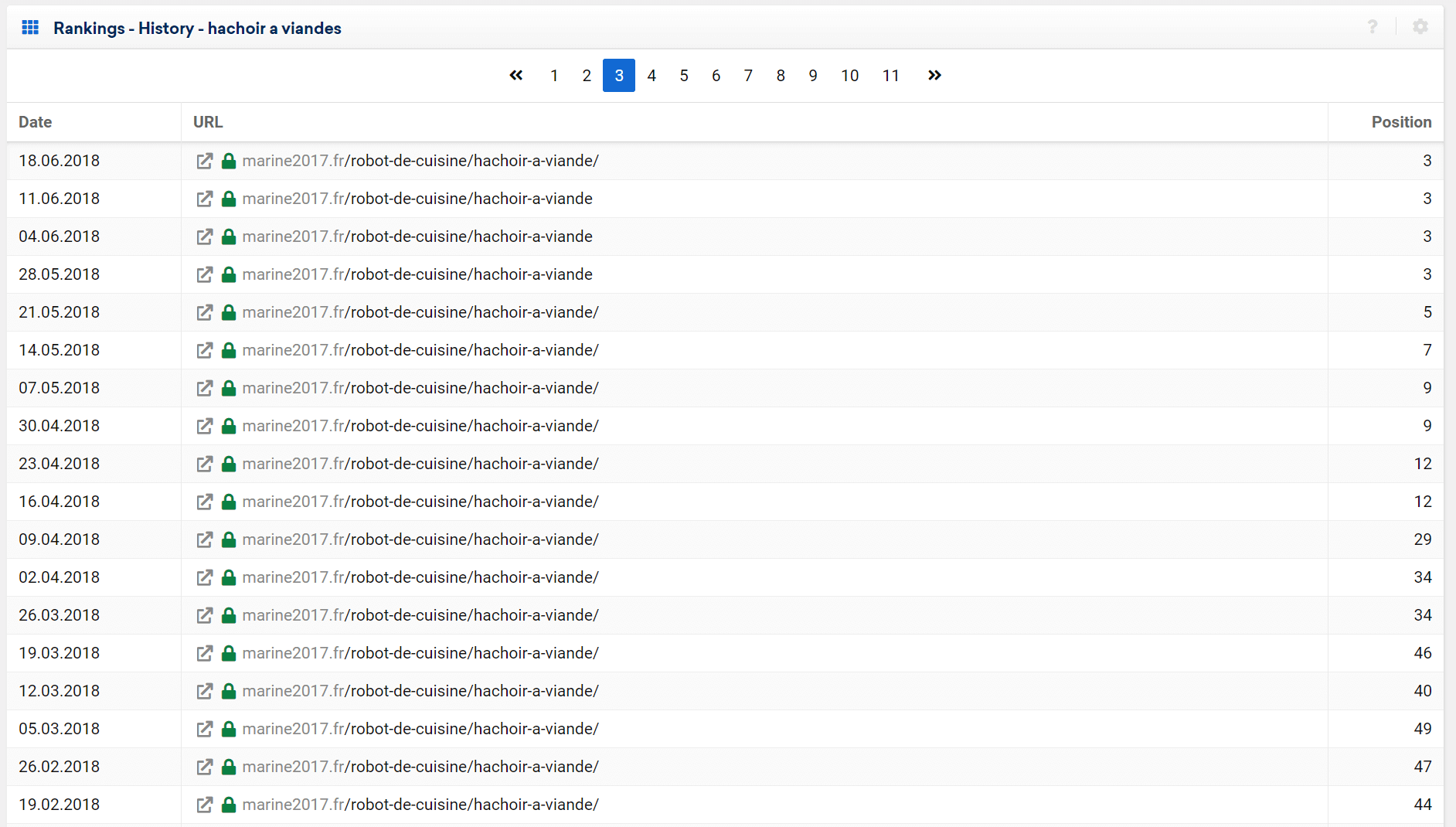
The targeted keywords all have the same characteristics: huge search volume, clear purchase intent and related products with medium to high purchase value. Note that the website was not ranking only thanks to the backlinks we mentioned earlier: the content was actually good and matched with the user intent.
Some additional examples:
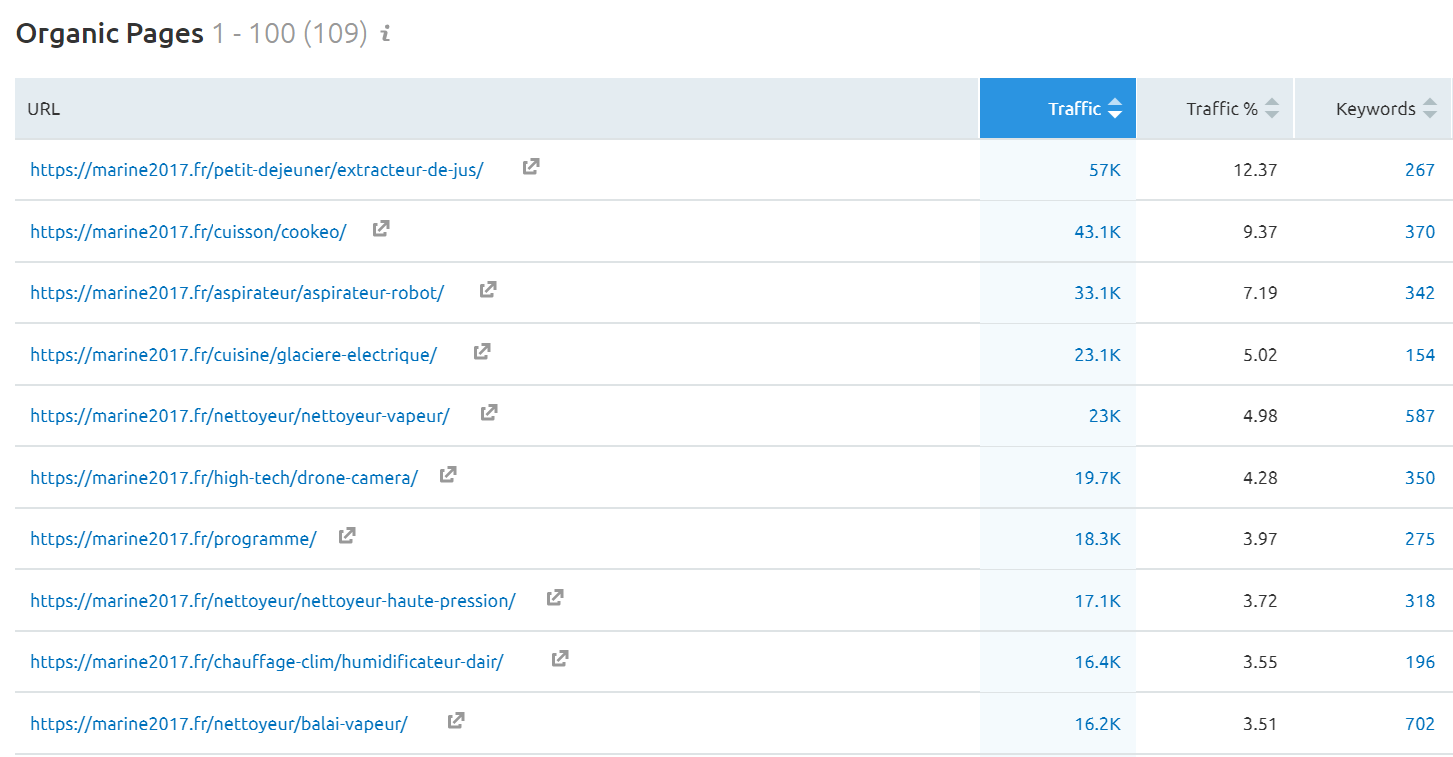
In May 2018, the website was generating (based on SEMRUSH data) around 500.000 sessions per month, which is huge given that SEMRUSH usually underestimates real organic traffic because it underreports long tail keywords ! Even if the website owner had to invest a lot for the content creation, I strongly believe that the ROI was fairly positive.
During 2018 and at the beginning of 2019, the website owner followed with the strategy, adding more content and targeting more verticals.
2019: What happened in September?
In 2019, the website almost disappeared during several weeks from Google.
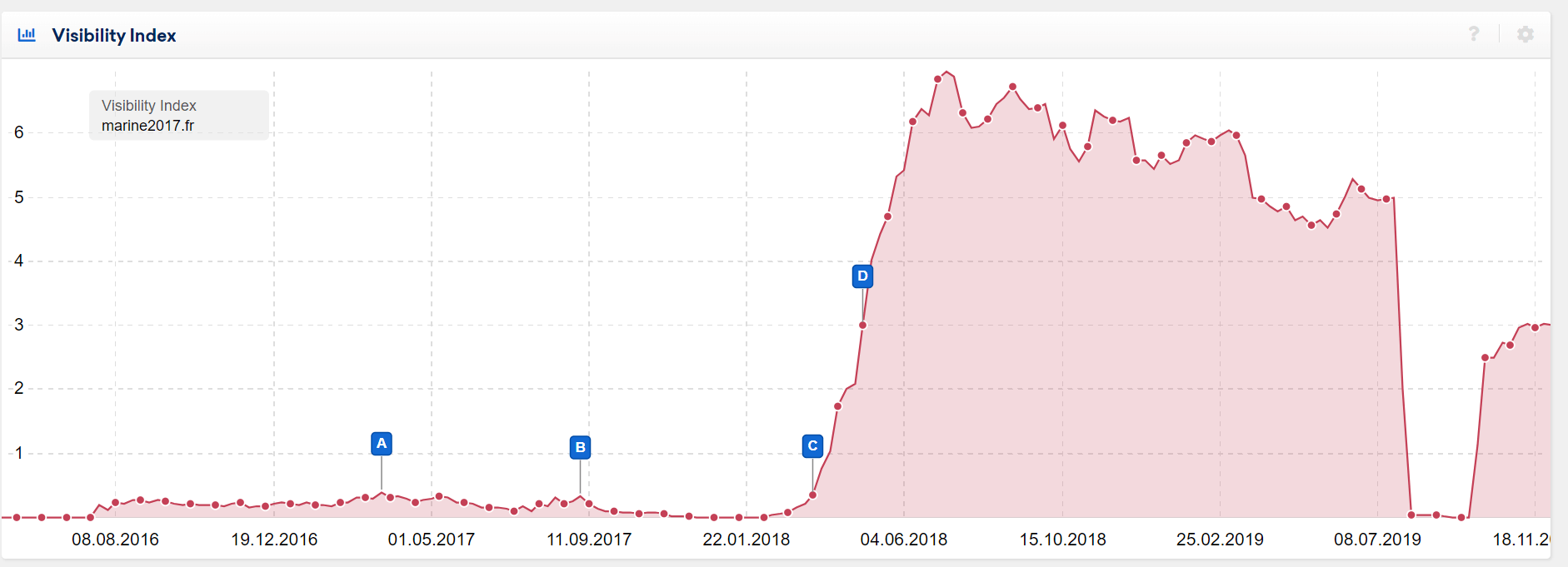
I thought at the beginning that the issue came from Sistrix, but it lasted too long to be the case and SEMRUSH showed the exact same trend. So, what happened?
If we look at the keyword-level data, a lot shows the same: the website disappeared during several weeks from Google and reappeared almost at the same position a while after.
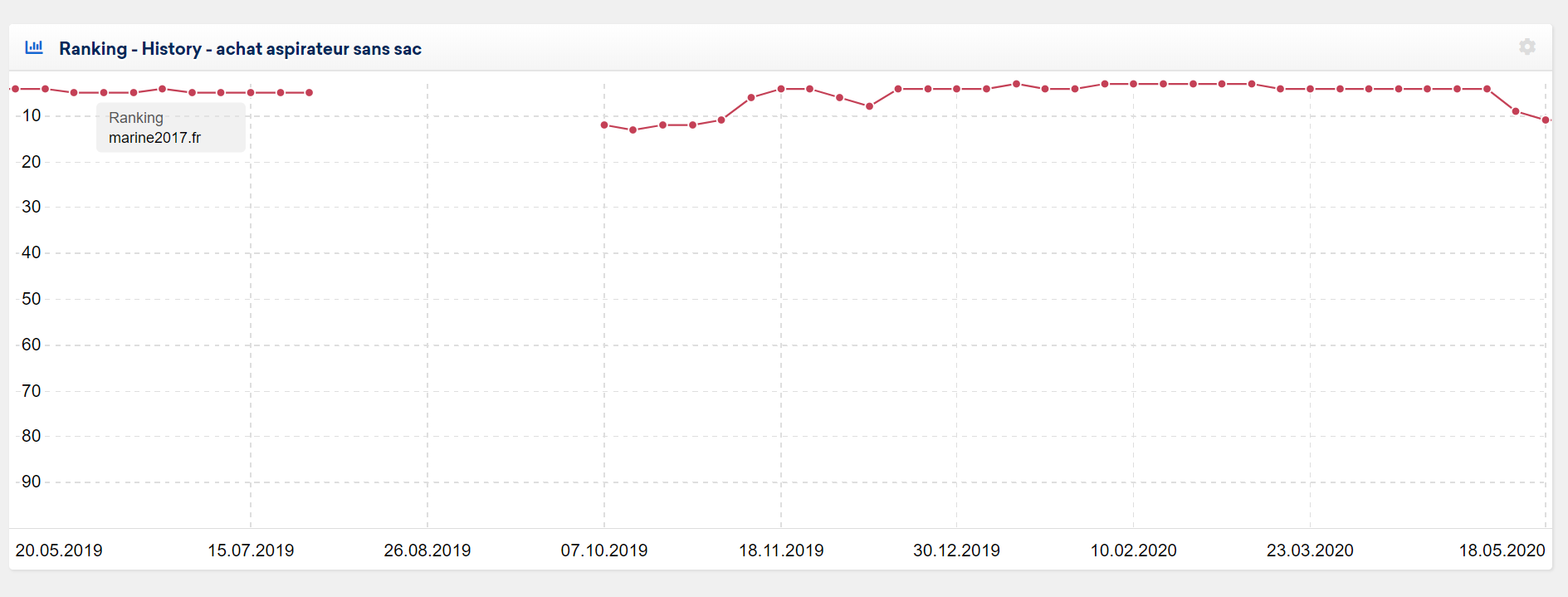
This behavior is pretty strange and something definitely happened during these weeks. By using archive.org, I was able to understand what really occurred. The owner tried to move the content from the current domain to a new one.
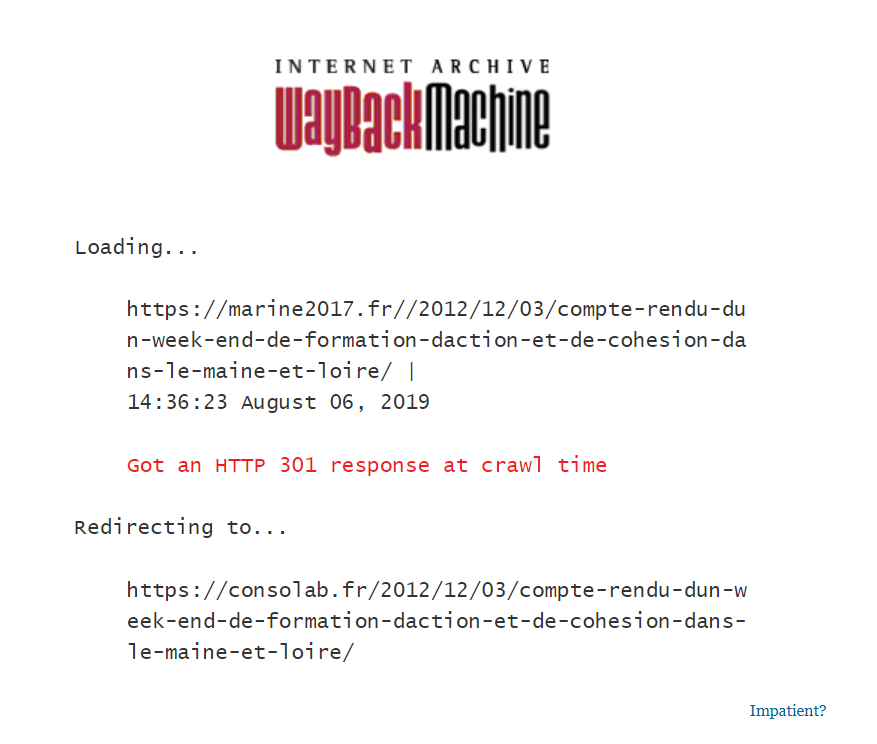
A 301 redirect is used to redirect users and search engines to the new URL used for a content. You expect search engines to update their indexes and replace the old by the new one in their results, maintaining your rankings. I completely understand why you would do that for this project:
- I would expect the CTR to be impacted slightly by the domain name, even if rankings were good. I mean, even if you do agree with Le Pen’s ideas, you would not use her website to buy a meat grinder…
- A discrepancy between your domain name and your brand could frighten some users, thinking that they are witnessing a phishing attempt.
- At some point and even if the previous point is proven false, you need to have some coherence between the brand name and the domain. Even if you can’t expect everyone to know that marine2017.fr was a domain used by Marine Le Pen in 2017, it is strange.
It seems that the redirections (at least from the example showed above) have been correctly implemented, but did the new website really achieve to maintain rankings? Well, it doesn’t look so:
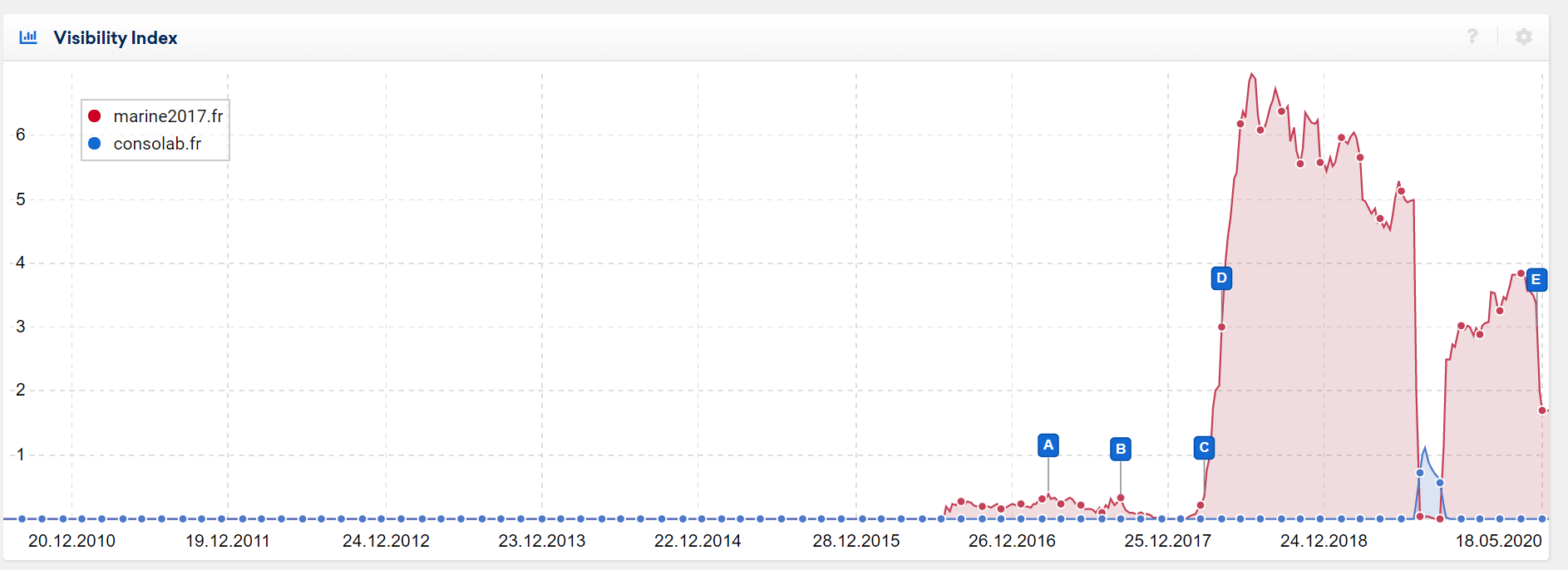
We can then understand what happened:
- The owner tried to rebrand the website using a different name, as explained above
- The results were not as good as expected, hence the decision was taken to reverse the change, even if the brand is still “Consolab” as you can see on the website right now:
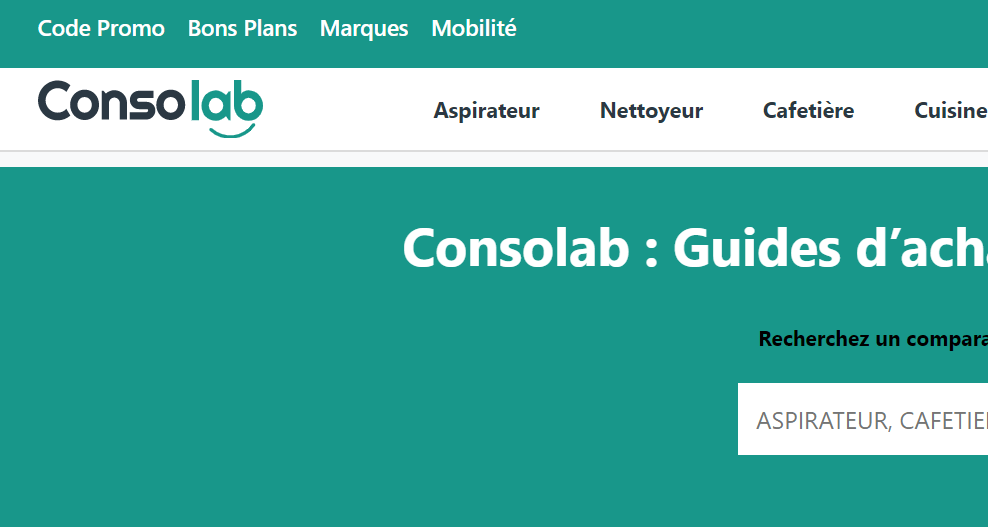
But why did the results were so bad if the redirections were implemented correctly? I strongly believe that Google didn’t like the fact that so many backlinks were linked to the word “Marine”, something that didn’t appear neither in the content nor the domain name. It’s only a guess, but the fact is that the migration was reversed quickly because the new domain didn’t work, and almost immediately marine2017.fr retrieved its previous position.
2020: End of the golden era?
During the last weeks, the website has fallen dramatically, as we can see in the following image:
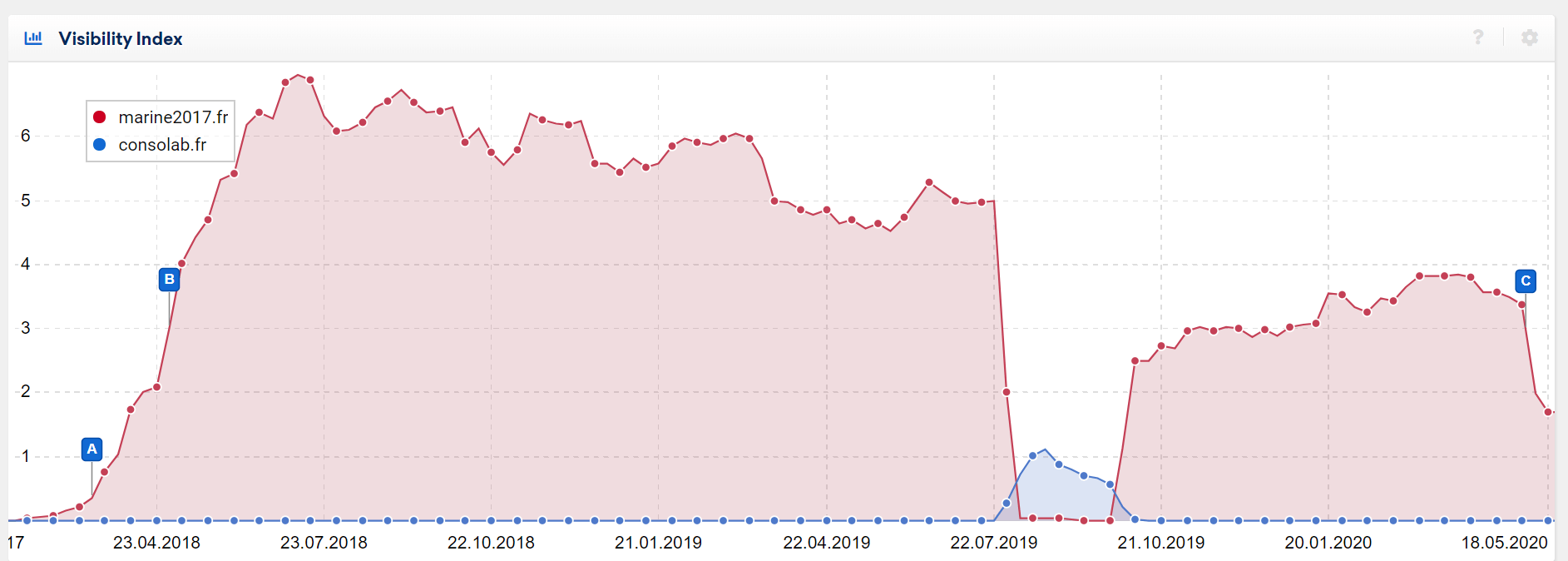
This drop happens just after Google announced that it was going to update its algorithm, which is updated without us knowing it throughout the year anyway. The reason is not as obvious as in 2019 but the website lost a bunch of good positions on good keywords. Did the algorithm finally understand the discrepancy between the original purpose of its domain and the current content? I honestly didn’t investigate it but I’m sure that the website owners are on it as we speak 🙂
Conclusion
If you are familiar with the affiliate world, you certainly have dozens of examples like the one provided in this article. It is actually a best practice to try to use a domain with previous activity to rank faster. You also have situation where a company would buy one of its competitors to include its content in its website and grow faster. See one example in this thread from MJ Cachon (in Spanish), country manager of Sistrix Spain.
Nevertheless, this example stands out because it shows how you can still “trick” the algorithm if you are smart enough and buy the right domain at the right time.
One last thing to finish my article: this example shows that sometimes you need to find outside the box and take some risks to achieve great & quick results in SEO. I have never seen any website rank so fast on so competitive keywords !
